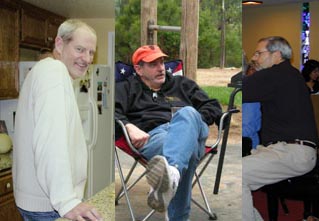I was honored to meet with a group of Brehm Center students last Tuesday at Fuller Seminary. My task was to lead them through a couple of chapters of Bob Kauflin’s recent worship book, and share some of my perspectives based upon 40+ years of being a professional church musician. In the next few posts, I want to highlight, and elaborate upon a few of the things we talked about in that class session.
Kauflin makes a point, when talking about music in worship, that whether you are accompanying congregational singing or doing special music, the musician or musicians need to adjust their musical arrangements and volume:
“Varying when we play, how loudly we play, and what we play affects how people hear the words. The larger the team of musicians, the more each member should be listening to and making room for what others are doing.”
I think he makes a critical point. The hallmark of a musically advanced group is their ability to listen to what is going on around them, and adjust “on the fly” to what they are hearing. I do think that Kauflin leaves out one important point, however. It is not just the other musicians that we need to be listening to when we play. Even more importantly, when accompanying congregational song, we need to be able to listen to the congregation singing.
That may mean turning down the volume, which means that the audio tech needs to be listening to the congregation as well, as Kauflin says:
“The sound of the musicians shouldn’t dominate or overpower the congregation.”
I would say that unless the congregation hears itself singing on a regular basis, that congregation will slowly become more passive in their singing. I firmly believe that letting the congregation sing a cappella (without accompaniment) from time to time is crucial to their feeling like they are participating in worship. Even if you don’t believe that to be true, I urge you to try it on a hymn or chorus that they know well…Amazing Grace if nothing else.
Here’s a way to do this, and ease the congregation into the chance to hear themselves sing:
- Play a strong enough introduction so that nobody is unclear about what tune they are about to sing
- Play the melody with the congregation for the first phrase or two of the first verse so that anybody who wasn’t paying attention clearly understands the tune
- Gradually move away from playing the melody, and begin to play accompaniment that underscores the subtext or emotional content of the words
- On one verse lead them to the first chord, play it strongly and then just stop…there will be a momentary sense of shock amongst some, particularly if you’ve neve done this before
- Resist the urge to jump back in and “save them” even if the tempo slows down or the pitch starts to go
- Between the a cappella verse and whatever comes next, play a short interlude to re-establish the key (if necessary) and/or make a transition to a new tune
Try it…it does work. Soon you’ll be letting the congregation sing unaccompanied verses because of the meaning of the text of that verse. It will bring the words home to them even more clearly because the texture of the accompaniment has changed.
This is not a new idea, and I’m sure many of you reading this already use this technique. Please leave a comment and let me know if you have any variations on this tip.
…
You can follow me on twitter here
Join me on facebook here












{ 3 trackbacks }
{ 0 comments… add one now }
You must log in to post a comment.